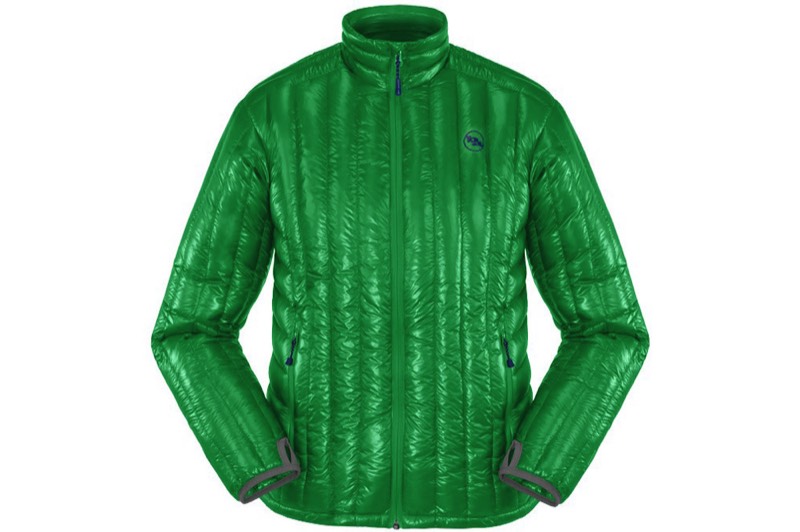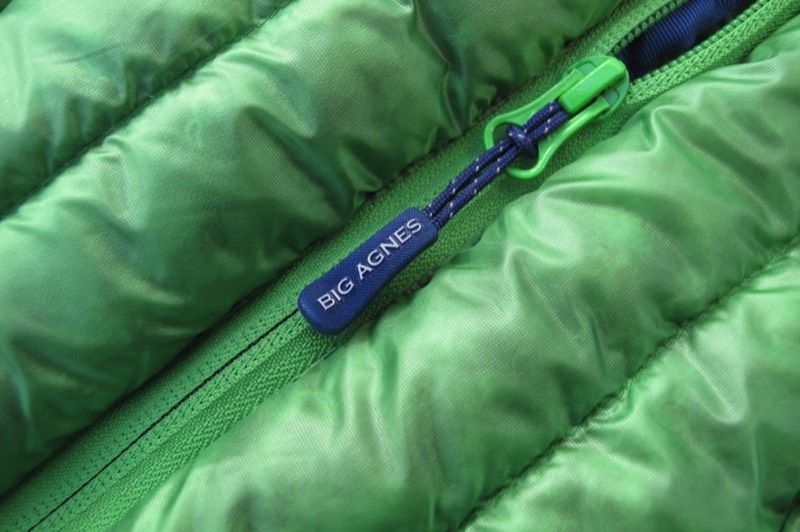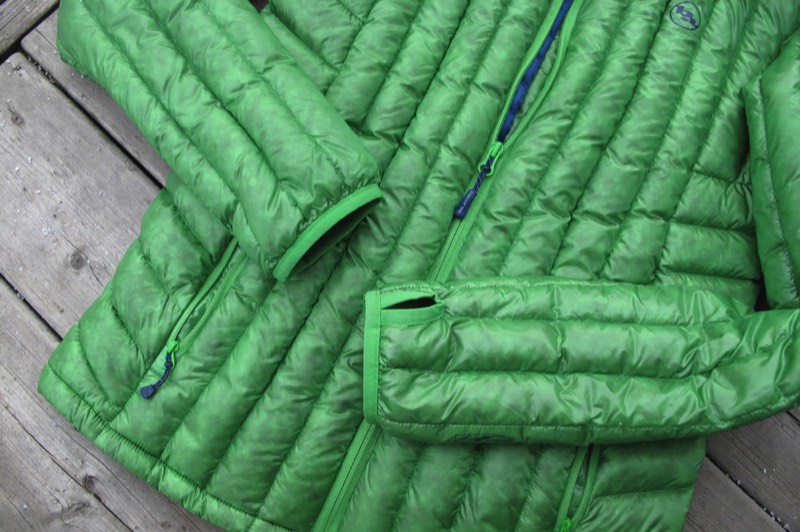Big Agnes Meaden Jacket - Superior function with dramatic styling.
After years of taking a back seat to synthetic insulations, down is once again becoming a popular fill choice for cold weather clothing. While much of this recent popularity can be attributed to the performance of a new generation of waterproof/water-resistant down, it’s also hard to ignore that the required down-baffle construction allows designers and companies to create dramatic-looking clothing.
Yes, I can hear some of you already screaming about how you would never let aesthetics influence your choice of technical climbing clothing. Good for you. I suspect that you’re also the same person that wears socks with sandals. For the rest of us, who are not so fashion challenged, we’ll admit that when deciding between two jackets that provide similar performance, we’ll likely choose the one that looks better. Perhaps this explains why so many companies are now offering down jackets with various down-baffle patterns; anything to help you stand out from the Michelin-Man jacket crowd.
Yes, I can hear some of you already screaming about how you would never let aesthetics influence your choice of technical climbing clothing. Good for you. I suspect that you’re also the same person that wears socks with sandals. For the rest of us, who are not so fashion challenged, we’ll admit that when deciding between two jackets that provide similar performance, we’ll likely choose the one that looks better. Perhaps this explains why so many companies are now offering down jackets with various down-baffle patterns; anything to help you stand out from the Michelin-Man jacket crowd.

Big Agnes Meaden Jacket
Which brings us to the Big Agnes Meaden jacket and its eye-catching vertical baffling. I think that the Meaden is one of the smartest looking down jackets I have seen in a long time. For me, the vertical baffles create a unique look that is a lovely change from more conventional down-jacket styles. That said, I would be lying if I didn’t admit that I had some initial reservations about the jacket. In down garments, baffles are used to prevent the down from shifting and settling, which then creates cold spots. By using vertical baffles, you’re encouraging the down to migrate to the bottom of the tubes leaving almost no insulation in the rest of the jacket. Realizing this, Big Agnes has employed Insotect’s Flowgate system that uses a series of gates that help keep the 850 fill power water repellent down from shifting. Suddenly, this vertical construction not only ensures the down stays where it was intended, but also allows for the jacket to more closely hug the shape of the user for a better fit and greater warmth. This innovative construction, combined with the high lofting down and lightweight and wind resistant nylon rip-stop shell allows the Meaden to provide exceptional warmth, compressibility and multi-use versatility. In warmer conditions, I found myself using the Meaden as a lightweight insulating outer layer. When the temps dropped, the garment’s slick shell fabric and low bulk allowed for effortless layering under a hard or soft shell.

The oversized and easy-to-use Big Agnes zipper pull.
Other features that I appreciated on the Meaden jacket include the thumb holes at the wrists that simplify layering and minimize drafts, as well as the slightly oversized textured zipper-pull that was dead-easy to use with gloves. Yes, this last feature might seem trivial, but it’s amazing how such small details can make a noticeable difference in the field; sometimes bigger is better. For storage of small items, Big Agnes specs two zippered hand-warmer pockets as well as two roomy interior mesh pockets that are ideal for storing gloves or hats.

Thumb loops at the sleeves simplify layering and minimize drafts.
Big Agnes should be praised for producing garments like the Meaden jacket. Not only does it deliver uncompromising performance during cold weather activities, but it also manages to offer a distinct and attractive look that will be appreciated in more urban environments.
You can find out more about the new Big Agnes Meaden Jacket and other Big Agnes products at https://www.bigagnes.com/.


